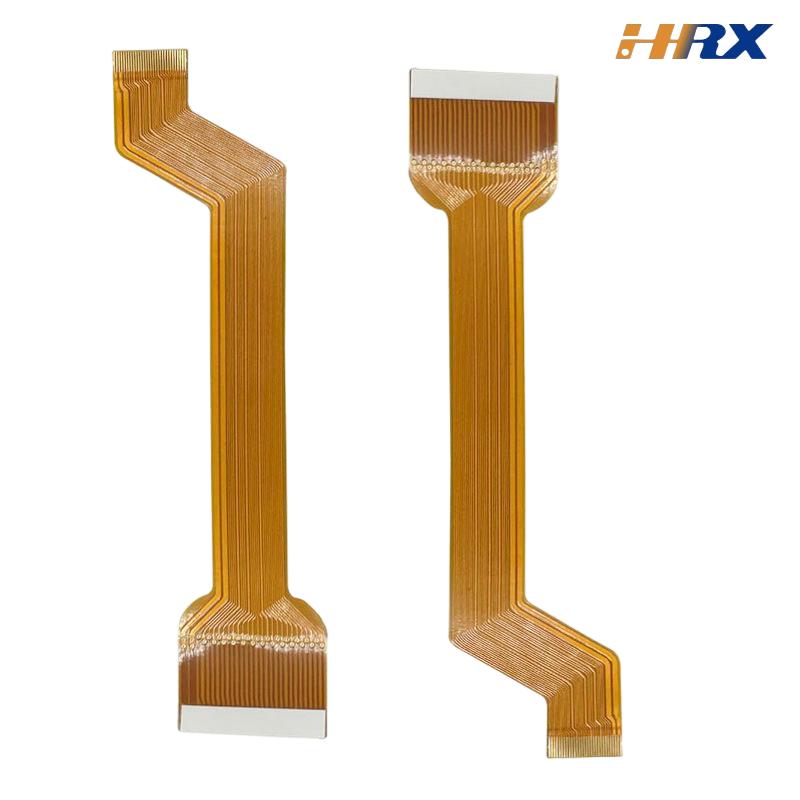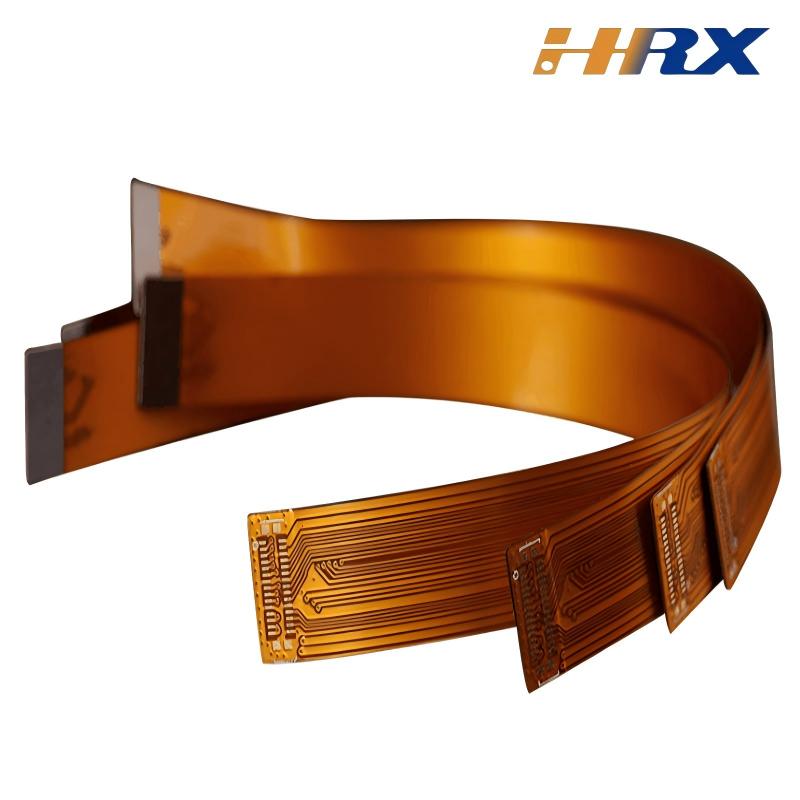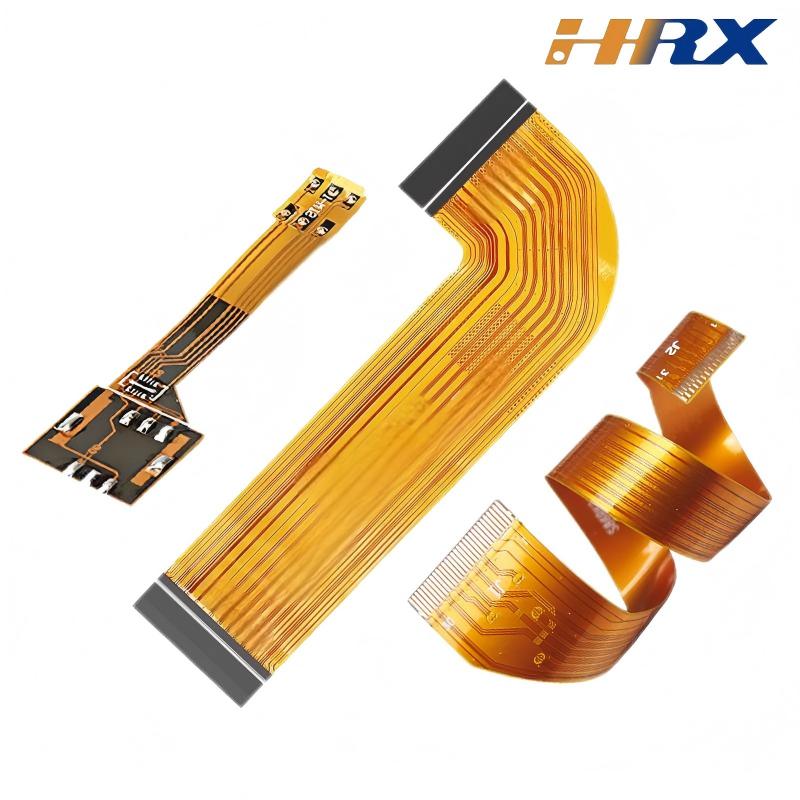Search
Flexible Printed Circuits for Wearable Devices: Key Considerations in Design, Manufacturing, and Quality Control
- Jul 19,2025
-
Share
The rapid evolution of wearable technology—from smartwatches and fitness trackers to medical monitoring patches and AR/VR headsets—has pushed the boundaries of what’s possible with flexible printed circuits (FPCs). These devices demand electronics that are not only compact and lightweight but also bendable, stretchable, and durable enough to withstand constant movement against the human body. As a critical component in wearable devices, FPCs must meet stringent requirements in design, manufacturing, and quality control to ensure performance, reliability, and user safety.
Shenzhen Huaruixin Electronics Co., Ltd., a leading ODM/OEM manufacturer with extensive experience in FPC, PCB, and rigid-flex printed boards, understands these challenges deeply. With a large-scale manufacturing base and a focus on professional design and development, Huaruixin has honed its expertise in addressing the unique needs of wearable device FPCs. Below, we explore the key considerations in designing, producing, and inspecting FPCs for wearables, along with insights into how Huaruixin’s capabilities make it a trusted partner in this space.

Critical Design Considerations for Wearable FPCs
Designing FPCs for wearables requires a delicate balance between functionality, flexibility, and form factor. Unlike traditional FPCs used in consumer electronics, wearable FPCs must adapt to the human body’s contours and movements, often in compact or irregularly shaped spaces.
Material Selection: Flexibility Meets Durability
The choice of base materials is paramount. Wearable FPCs typically use polyimide (PI) substrates for their excellent thermal resistance, flexibility, and mechanical strength. However, for applications requiring extreme stretchability (e.g., fitness bands), specialized materials like thermoplastic polyurethanes (TPU) or stretchable conductive inks may be integrated. Huaruixin’s design team works closely with clients to select materials that balance flexibility, biocompatibility (for skin-contact devices), and longevity—critical for wearables that endure sweat, moisture, and repeated bending. The selection of coverlay materials is also crucial, as they provide additional protection against environmental factors while maintaining the FPC’s flexibility.
Miniaturization and High-Density Layouts
Wearables demand compact designs without sacrificing functionality. This means FPCs must support high-density interconnects (HDIs) with narrow line widths and spacings (often down to 30μm or less). Designers must minimize signal interference, especially in devices with sensors, Bluetooth modules, or biometric trackers. Huaruixin’s expertise in advanced design tools and ODM services ensures layouts optimize space while maintaining signal integrity, a result of years of experience in solving complex routing challenges for wearable tech. Utilizing techniques such as blind and buried vias helps in achieving higher component density without compromising the FPC’s flexibility.
Mechanical Reliability
Wearable FPCs are subjected to continuous flexion, torsion, and stress. Designers must account for bend radii, dynamic load distribution, and strain relief to prevent conductor fatigue or delamination. For example, FPCs in smartwatches must withstand daily wrist movements, while those in hearing aids require ultra-fine, highly durable circuits. Huaruixin’s design process includes finite element analysis (FEA) to simulate mechanical stress, ensuring FPCs meet durability standards for long-term use. The implementation of stiffeners in strategic areas provides additional support where needed, without hindering the overall flexibility of the FPC.
Thermal Management
Many wearables (e.g., health monitors, AR glasses) generate heat during operation. FPC designs must dissipate heat efficiently to avoid discomfort or skin irritation. Huaruixin integrates thermal vias, heat-spreading layers, or low-thermal-resistance adhesives into designs, leveraging its manufacturing capabilities to implement these features without compromising flexibility. Proper thermal management also helps in maintaining the performance of sensitive components mounted on the FPC.
Manufacturing Challenges for Wearable FPCs
Turning a well-designed FPC into a functional product requires precision manufacturing, especially for wearables with tight tolerances. Huaruixin’s large-scale manufacturing base is equipped to address these challenges:
Precision in Etching and Lamination
High-density wearable FPCs require precise etching to achieve fine line widths and consistent conductor quality. Uneven etching can lead to signal loss or short circuits. Huaruixin uses advanced laser direct imaging (LDI) and automated etching systems to ensure accuracy. Similarly, lamination of flexible substrates and coverlayers must be void-free to prevent moisture ingress—a common issue in skin-contact devices. Their controlled lamination processes, paired with rigorous in-line inspections, minimize defects. The use of high-quality adhesives ensures strong bonding between layers, enhancing the FPC’s overall reliability.
Handling Fragile Substrates
Flexible materials like thin PI are prone to wrinkling or tearing during manufacturing. Huaruixin’s production lines incorporate automated handling systems and specialized tooling to reduce manual contact, ensuring substrates remain intact. This is especially critical for ultra-thin FPCs used in minimally invasive wearables (e.g., patch sensors). The implementation of cleanroom manufacturing environments further reduces the risk of contamination, which is essential for maintaining the quality of these delicate substrates.
Integration of Specialized Components
Many wearables require FPCs to integrate with sensors, batteries, or connectors. Huaruixin’s OEM services include precision assembly, such as solder paste printing for surface-mount devices (SMDs) and conductive adhesive bonding for delicate components. Their manufacturing team’s experience with wearable-specific components ensures reliable, low-profile integrations. The use of automated pick-and-place machines ensures accurate placement of components, even in high-density layouts.
Quality Inspection: Ensuring Wearable-Grade Reliability
Quality control is non-negotiable for wearables, where failures can compromise user experience or safety. Huaruixin’s quality inspection processes are tailored to wearable FPCs:
Electrical Testing
Each FPC undergoes rigorous electrical tests, including continuity, insulation resistance, and impedance checks. For high-frequency wearables (e.g., Bluetooth-enabled devices), Huaruixin uses network analyzers to verify signal performance. This ensures no hidden shorts or opens that could cause device malfunctions. In-circuit testing (ICT) is also employed to detect any manufacturing defects that may affect the FPC’s electrical functionality.
Mechanical Durability Testing
To validate flexibility, FPCs are subjected to repeated bend tests (often 10,000+ cycles) at specified radii, simulating real-world use. Huaruixin also tests for peel strength between layers to prevent delamination, a key failure point in flexing applications. Tensile and compressive strength tests are conducted to ensure the FPC can withstand the mechanical stresses it will encounter during use.
Visual and Dimensional Inspections
Automated optical inspection (AOI) systems detect micro-defects like pinholes, scratches, or uneven coverlay edges—flaws that could compromise functionality or aesthetics. Dimensional checks ensure compliance with tight tolerances, critical for fitting into small wearable enclosures. 3D inspection techniques are used to provide a more comprehensive analysis of the FPC’s surface and structure.
Environmental Testing
For wearables exposed to moisture, sweat, or temperature fluctuations, Huaruixin conducts humidity, temperature cycling, and corrosion resistance tests. This ensures FPCs perform reliably in diverse user environments. Salt spray testing is also performed for FPCs used in harsh environments to assess their corrosion resistance.
Why Huaruixin Stands Out in Wearable FPC Solutions
Shenzhen Huaruixin Electronics Co., Ltd. combines design innovation, manufacturing precision, and strict quality control to deliver FPCs that meet the unique demands of wearable devices. As a professional ODM/OEM manufacturer with a large-scale production base, Huaruixin offers:
End-to-End Expertise: From initial design consultation to mass production, their team addresses every challenge—material selection, miniaturization, durability—with tailored solutions.
Scalability: Their manufacturing infrastructure supports both prototyping and high-volume production, ensuring seamless transitions from development to market.
Client-Centric Collaboration: With a focus on learning and improvement, Huaruixin works closely with clients to refine designs and solve complex problems.
If you’re working on a wearable device project and need a reliable FPC partner, contact us today. Visit www.hrxfpc.com to explore our capabilities or email sales@hrxfpc.com to discuss your needs. Let’s collaborate to bring your wearable innovation to life.

Let’s talk! We’ll provide the perfect solution for you!
-
 Huaruixin Electronics mainly produces printed circuit boards as the core business, to provide customers with one-stop solutions for FPC/PCB production, components sourcing and Assembly.
Huaruixin Electronics mainly produces printed circuit boards as the core business, to provide customers with one-stop solutions for FPC/PCB production, components sourcing and Assembly. - WHAT WE DO — PCB Design Solutions — Flex PCB Production — Components Sourcing — FPC&PCB Assembly
- PRODUCTS — Single Sided Flexible Circuits — Double Sided Flexible Circuits — Multilayer Flexible Cirucits — Rigid-Flex Circuits — FPC Assembly — PCB Assembly
- CAPABILITY — FPC Capability — Rigid-Flex Capability — PCB Capability — Assembly Capability
- Copyright © 2024 Shenzhen Huaruixin Electronics Co., Ltd. All Rights Reserved.
- Design By BONTOP


